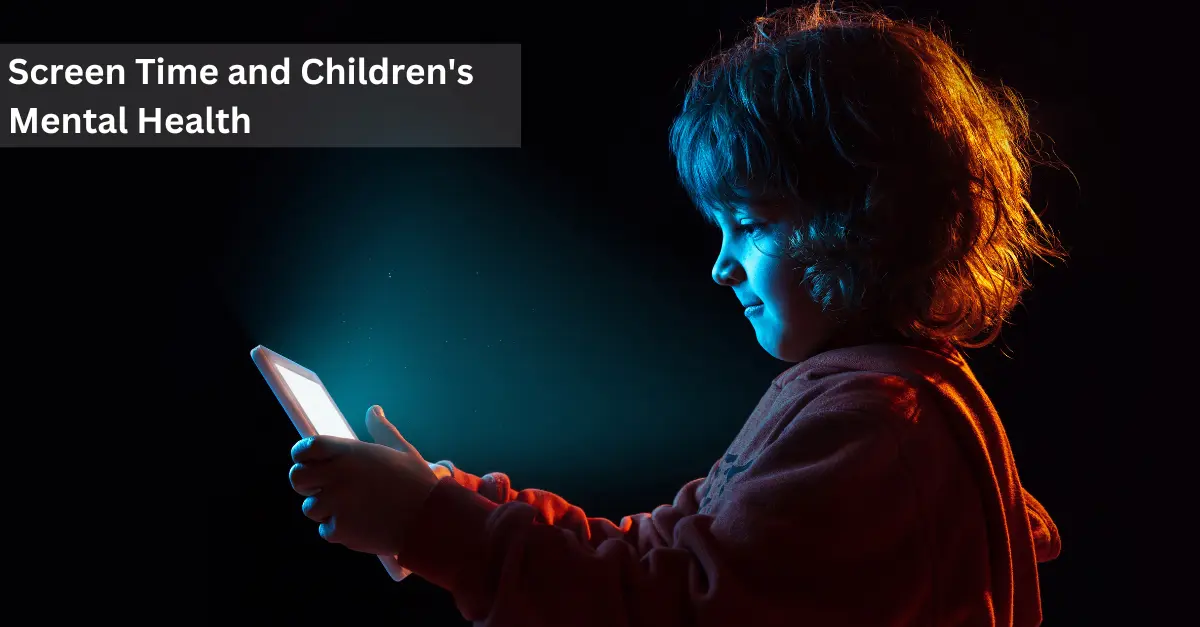In today's digital age, screens have become an integral part of our lives, and children are no exception. Whether it's smartphones, tablets, computers, or televisions, screens are readily accessible to kids of all ages. While technology offers numerous benefits, it also raises concerns about its impact on children's mental health. In this blog post, we will explore the relationship between screen time and children's mental well-being and provide insights into how parents and caregivers can strike a healthy balance.
The Rise of Screen Time
The advent of smartphones and the widespread availability of the internet have dramatically increased children's exposure to screens. According to a survey by Common Sense Media, the average screen time for children aged 8 to 18 is nearly 7 hours a day. This statistic alone underscores the significance of the issue at hand.
Impact on Mental Health
Excessive screen time has been linked to various mental health concerns in children. One major concern is the potential for screen addiction, which can lead to social withdrawal, anxiety, and depression. Spending too much time online may also disrupt sleep patterns, further exacerbating mental health issues. Moreover, the content children encounter on screens, such as violent video games or cyberbullying, can contribute to emotional distress.
Importance of Balance
While it's essential to acknowledge the potential negative effects of screen time, it's equally important to recognize the benefits. Educational apps and websites can enhance learning, and screens can provide a sense of connection to friends and family, especially in today's world. The key is to strike a balance that allows children to enjoy the advantages of technology while mitigating its adverse impacts on their mental health.
Setting Screen Time Limits
One effective way to maintain this balance is to establish clear screen time limits for children. Experts recommend the American Academy of Pediatrics' guidelines, which suggest that children aged 2 to 5 should have no more than one hour of high-quality screen time per day. For older children, it's crucial to set specific time limits that align with their age and individual needs.
Consulting a doctor, especially a pediatrician or child psychologist, is essential for assessing and addressing the impact of screen time on a specific child's mental health.
Quality Over Quantity
Not all screen time is created equal. Emphasize the importance of quality content and interactive experiences over passive consumption. Encourage children to engage with educational apps, creative games, and content that promotes critical thinking and problem-solving. Limit mindless scrolling or binge-watching sessions that offer little educational or developmental value.
Tech-Free Zones
Designate certain areas in your home as tech-free zones, such as the dinner table or the bedroom. This helps create boundaries and ensures that screen time doesn't interfere with essential aspects of life, like family meals or restful sleep. Removing screens from the bedroom can significantly improve sleep quality, contributing to better mental health.
Be a Role Model
Children often learn by example. If parents and caregivers demonstrate responsible screen use, children are more likely to follow suit. Set your own screen time limits and prioritize face-to-face interactions. Encourage outdoor play and other offline activities to show children that there's a world beyond screens.
Open Communication
Foster open and non-judgmental communication with your children about their screen time. Discuss the potential risks and benefits, and encourage them to share any concerns or experiences related to their online activities. Creating a safe space for dialogue can help children make informed decisions about their screen use.
Physical Activity
Encourage physical activity as a counterbalance to screen time. Regular exercise has been proven to boost mood and reduce stress, making it an essential component of good mental health. Encourage your children to participate in sports, dance, or other physical activities they enjoy.
Monitoring Content
It's crucial to monitor the content your children consume online. Use parental control tools and filters to ensure they are exposed to age-appropriate content. Be aware of the websites they visit, the apps they use, and the people they interact with online. Protecting them from harmful content and online predators is essential for their safety and mental well-being.
Mindful Screen Use During the Pandemic
The COVID-19 pandemic has further blurred the lines between screen time for education and entertainment. With remote learning becoming the norm, children have been spending even more time in front of screens. Parents and educators should remain vigilant about screen time and ensure that it serves educational purposes while allowing for breaks and recreational activities.
Seeking Professional Help
If you notice significant changes in your child's behavior or mental well-being, it's crucial to seek professional help. A licensed therapist or counselor can provide guidance and support tailored to your child's needs. Don't hesitate to reach out if you suspect that screen time is negatively impacting your child's mental health.
Consulting a doctor, especially a pediatrician or child psychologist, is essential for assessing and addressing the impact of screen time on a specific child's mental health.
In conclusion, screen time and children's mental health are intricately linked in today's digital age. While screens offer numerous advantages, including educational opportunities and social connections, excessive or inappropriate screen time can lead to a range of mental health issues. Finding a balance that promotes healthy screen use, combined with open communication and other positive habits, is essential for supporting children's well-being in the digital era. By being mindful of screen time and its impact, parents and caregivers can help children navigate the digital world while safeguarding their mental health.
Related Blog Articles:
1. 20-20-20 Rule: A Simple Solution for Alleviating Eye Strain
2. Tips for Preventing Computer Vision Syndrome in Children and Adults
.webp)














